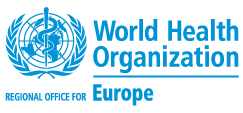Severe acute respiratory infection (SARI)-based hospital surveillance
Please refer to the Figures below for more information for this week.
Disclaimer: Please note that the displayed data is not correct.
This weekly update was prepared by an editorial team at the European Centre for Disease Prevention and Control and WHO Regional Office for Europe.
Maps and commentary do not represent a statement on the legal or border status of the countries and territories shown.
All data reflect what was reported by Thursday 10.00am of the week following the reporting week. Published data should not be used for longitudinal comparisons as countries tend to retrospectively update their data.
The WHO Regional Office for Europe is responsible for the accuracy of the Russian translation.
Kosovo*
*This designation is without prejudice to positions on status, and is in line with United Nations Security Council Resolution 1244 (1999)
and the International Court of Justice Opinion on the Kosovo Declaration of Independence.
Suggested citation:
European Centre for Disease Prevention and Control/WHO Regional Office for Europe. Flu News Europe, Joint ECDC–WHO weekly influenza update.
Tables and figures should be referenced:
European Centre for Disease Prevention and Control/WHO Regional Office for Europe. Flu News Europe, Joint ECDC–WHO weekly influenza update.
© World Health Organization 2024.
© European Centre for Disease Prevention and Control 2024.
Reproduction is authorised, provided the source is acknowledged.






